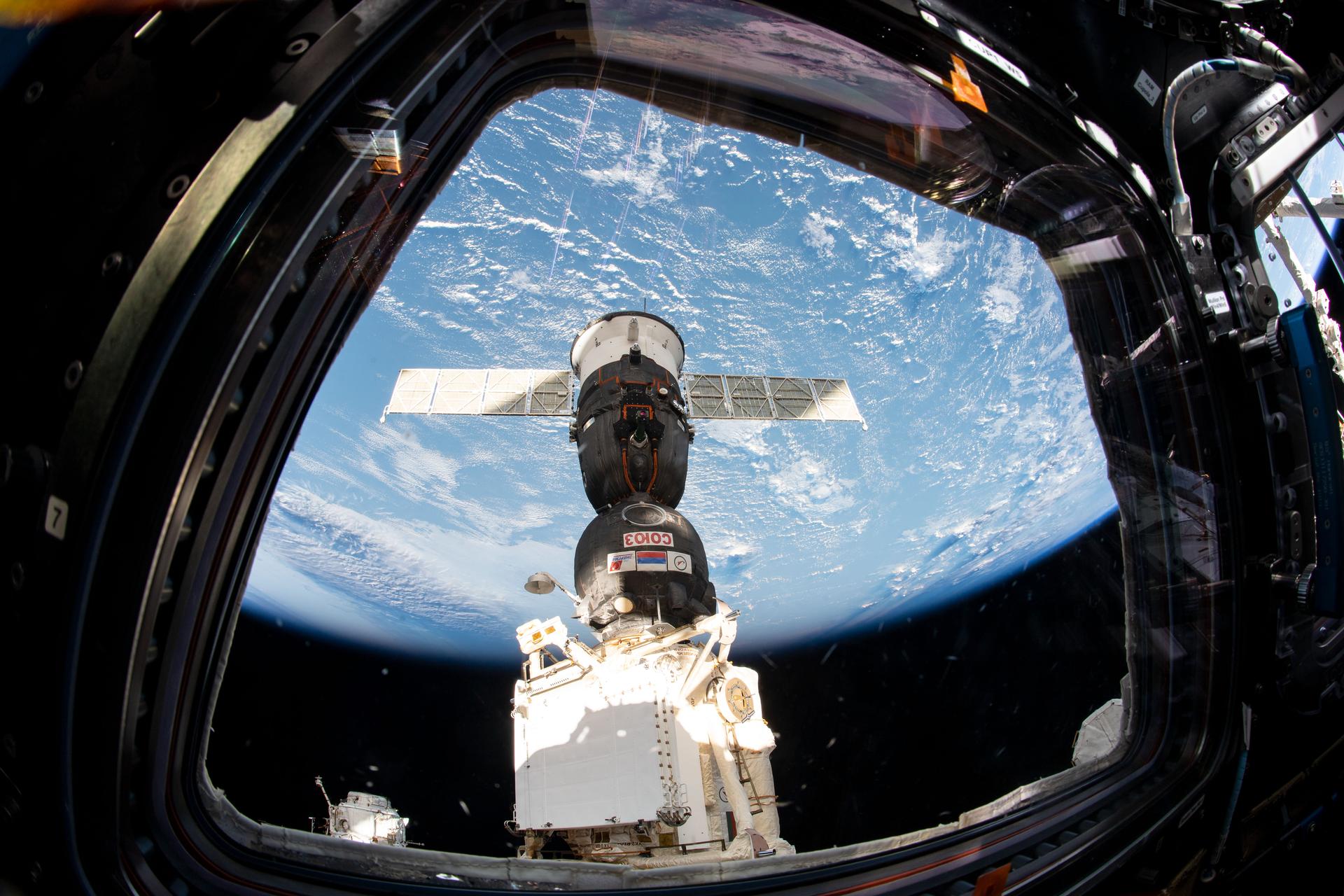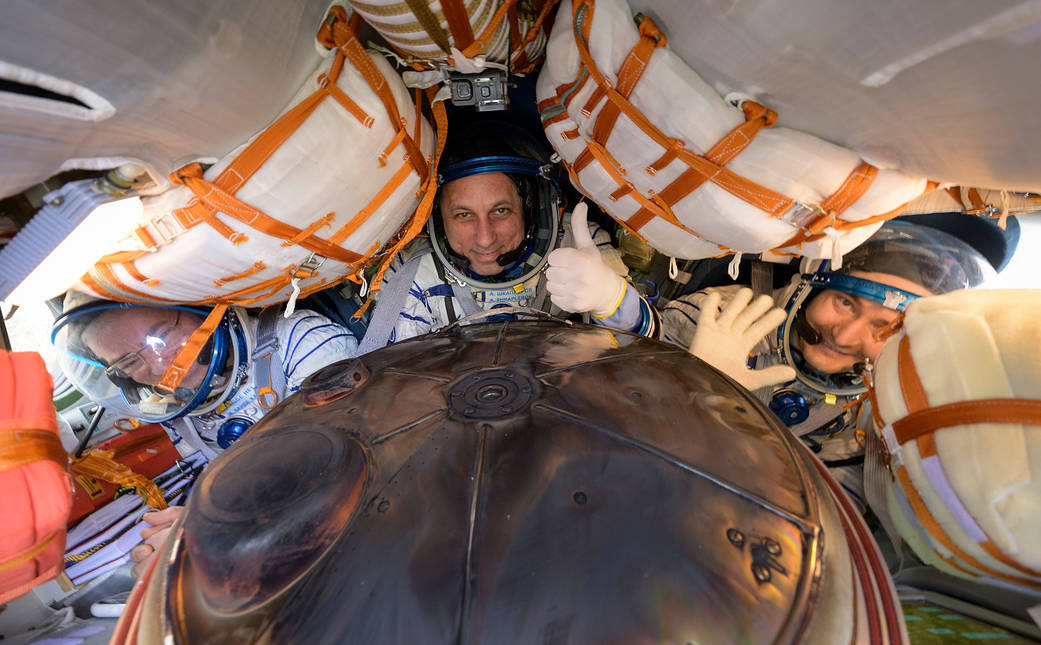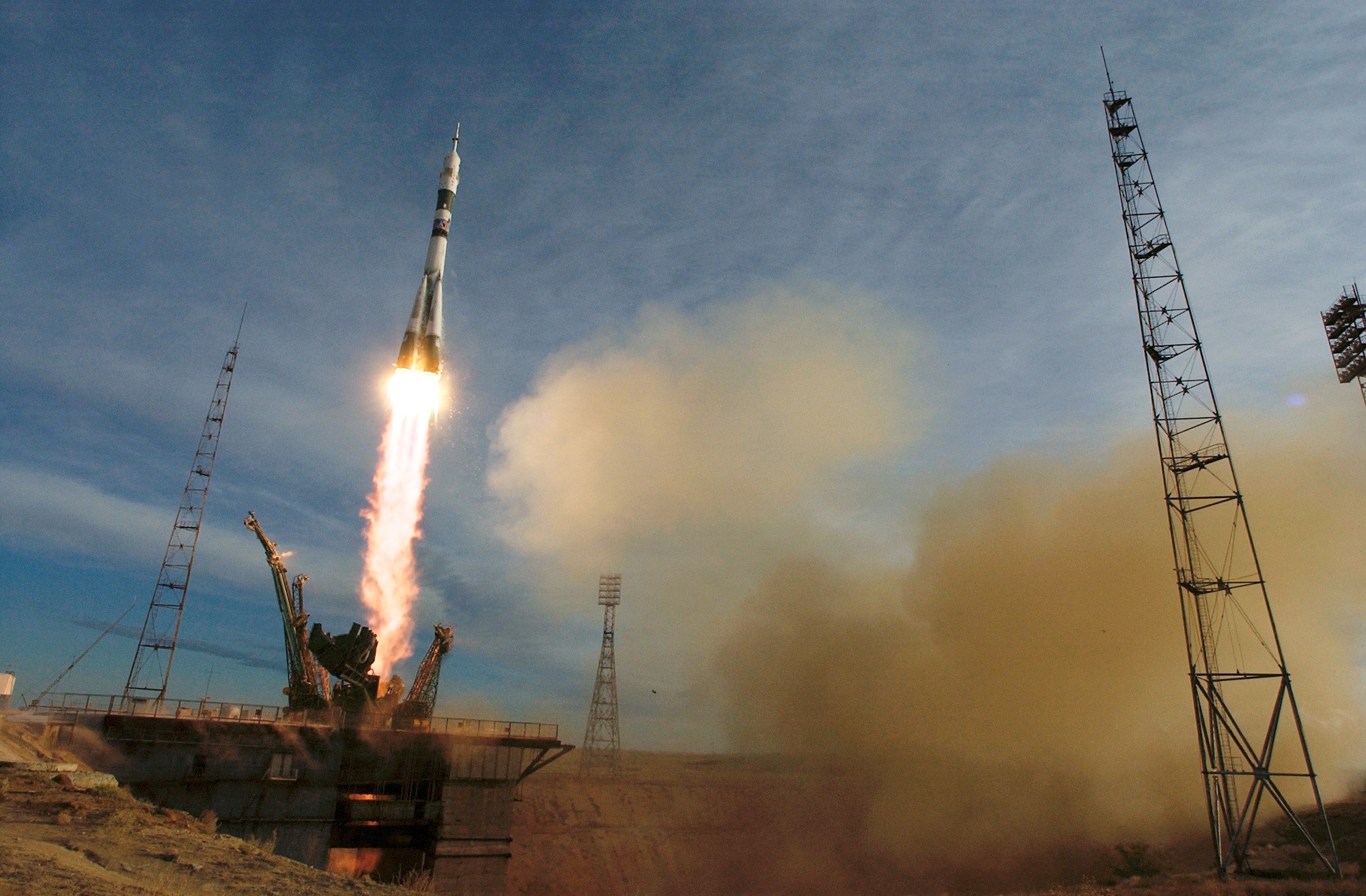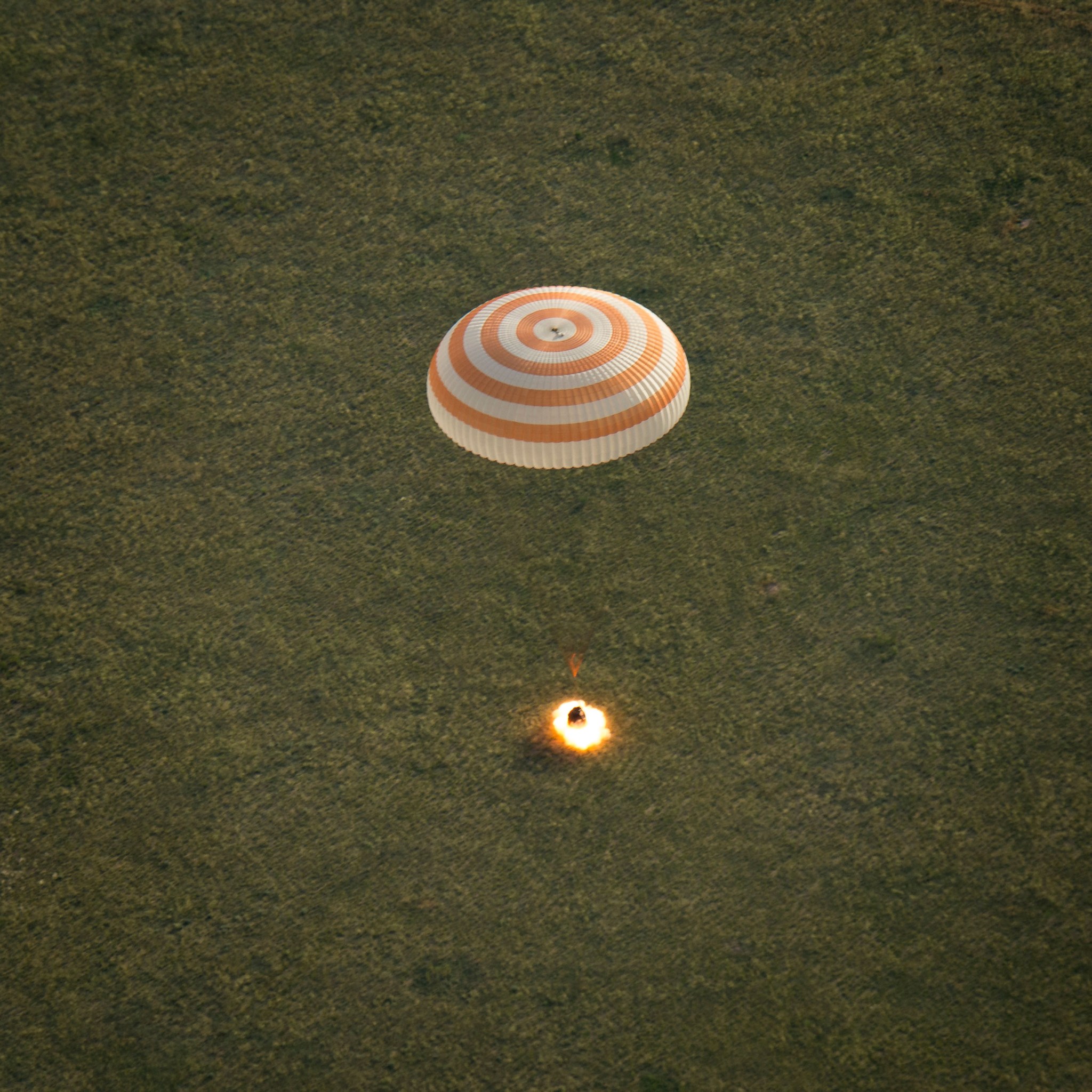This article is for students grades 5-8.
What Is the Soyuz?
The Soyuz (SAW-yooz) is a Russian spacecraft. Astronauts and cosmonauts travel to the International Space Station on the Soyuz.
The Soyuz launches from the Baikonur Cosmodrome. It is located in Kazakhstan, a country on Russia’s southern border.
____________________________________________________________________________________________
Words to Know
cosmonaut: an astronaut from Russia
hatch: an opening or door in a spacecraft
____________________________________________________________________________________________
What Can the Soyuz Do?
The Soyuz transports crews to the International Space Station and returns them to Earth after their missions. The crew rides in the part of the spacecraft called a capsule. Up to three astronauts or cosmonauts can ride in a Soyuz capsule.
The Soyuz is like a lifeboat for the space station. At least one Soyuz is always docked at the space station. If there is an emergency, the station crew can use the Soyuz to return to Earth.
What Are the Parts of the Soyuz?
The Soyuz capsule is made up of three main parts. They are the Orbital Module, the Descent Module and the Instrumentation/Propulsion Module.
The crew uses the Orbital Module as a living space while they are in orbit. It has about as much room inside as a large van. The Orbital Module has a docking hatch that can connect to the space station.
The Descent Module is where the crew sits during launch and landing. The controls for the spacecraft are in this section of the Soyuz.
The Instrumentation/Propulsion Module is home to the life support systems, batteries, solar panels and steering engines for the spacecraft.
How Does the Soyuz Launch and Land?
The Soyuz capsule launches on top of a Soyuz rocket. The crew enters the spacecraft about two hours and 30 minutes before launch.
When the Soyuz is taking a crew to the International Space Station, the spacecraft can take six hours to catch up with the space station as it orbits Earth. Docking to the station is automated. This means the crew does not have to steer Soyuz to the station.
The station crew returns to Earth on a Soyuz spacecraft. On the return trip, only the Descent Module lands. The other two modules are ejected. They burn up in Earth’s atmosphere. Just 15 minutes before landing, four parachutes deploy to slow the spacecraft.
First, two pilot parachutes open. Then a drogue (pronounced drohg) parachute deploys on the second pilot chute. This drogue parachute is larger and slows the spacecraft’s speed from 230 meters per second (755 feet per second) to 80 meters per second (262 feet per second).
____________________________________________________________________________________________
Words to Know
plains: a flat area of land
____________________________________________________________________________________________
Finally, the fourth and main parachute deploys. The main parachute is 40 times larger than the drogue chute. The main chute changes the angle of the Soyuz capsule to decrease the amount of heat around the vehicle as it travels through Earth’s atmosphere. Then the angle changes again so that the capsule is upright. The main chute slows the vehicle to 7.3 meters per second (24 feet per second).
But this speed is still too fast for landing. Unlike the U.S. space shuttle, which flew until 2011, the Soyuz does not have wheels and does not land like an airplane. One second before landing, two sets of small engines fire on the bottom of the spacecraft. These engines slow the spacecraft even more to try to keep its landing from being too rough. But it is still a hard landing.
The Soyuz lands somewhere within a selected 40-kilometer (25-mile) area in the grassy plains of Kazakhstan.
The return trip on the Soyuz only takes 3 1/2 hours from space station to Kazakhstan!































